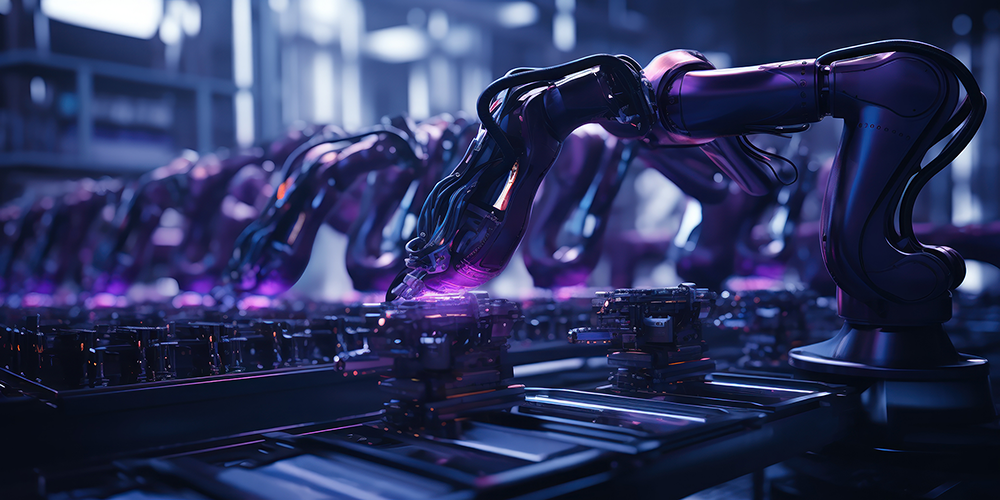In today’s digital era, organisations are constantly seeking ways to streamline their processes and increase operational efficiency. Robotic process automation (RPA) and workload automation (WLA) are two powerful technologies that can help businesses achieve this goal.
Both are similar, but they do vary. What they deliver in terms of business advantage are critical to support digital transformation agendas.
Robotic process automation (RPA) utilises software robots to automate repetitive, rule-based tasks, freeing up human employees to focus on more strategic and value-added activities. On the other hand, WLA is a centralised solution that automates and schedules complex workflows and tasks across an organisation’s IT infrastructure.
By integrating RPA with workload automation, businesses can create a more seamless and efficient automation ecosystem. RPA bots can be triggered by WLA workflows, ensuring that tasks are executed in a timely manner and that dependencies are met. Furthermore, the combined power of RPA and WLA allows your organisation to achieve end-to-end process automation, enabling it to achieve higher levels of productivity and accuracy.
In this article, we will explore the synergies between RPA and WLA and delve into how they can work together to drive digital transformation and optimise business operations. So, let’s dive in and discover the power of this dynamic duo.
Understanding Robotic Process Automation (RPA)
Robotic Process Automation (RPA) is a technology that utilises software robots to automate repetitive, rule-based tasks. These tasks are typically mundane and time-consuming, such as data entry, form filling, or invoice processing. RPA bots are designed to mimic human actions, interacting with applications and systems just like a human employee would.
RPA bots can be easily trained to perform specific tasks by recording the steps taken by a human user. Once trained, these bots can execute the same tasks at a much faster rate and with a higher level of accuracy. This frees up human employees to focus on more strategic and value-added activities, ultimately improving overall productivity.
RPA can be deployed in a variety of industries and functions, including finance and accounting, customer service, supply chain management, and human resources. Its versatility and efficiency make it a valuable tool for organisations looking to streamline their operations and reduce costs.
What is Workload Automation (WLA)?
Workload Automation (WLA) is a centralised solution that automates and schedules complex workflows and tasks across an organisation’s IT infrastructure.
It provides a unified view of all the processes and dependencies within an organisation, allowing for efficient management and execution of workloads.
WLA focuses on the triggering of events which then in turn activate processes through different environments with the aim of increasing cooperation between operating systems. WLA can manage across multiple IT environments, whether it is Customer Resolution Management (CRM), Enterprise Resource Planning (ERP), Finance, Operations, or Dev/Ops systems. It communicates both internally within your own company and externally with your partners, suppliers, and other vendors.
Crucially ensuring that tasks are executed in a timely manner and that dependencies are met, reducing the risk of errors and delays. WLA also provides monitoring and reporting capabilities, allowing your business to track the progress and performance of your workloads.
With WLA, organisations can optimise resource use, improve service levels, and ensure compliance with business policies and regulations. It eliminates the need for manual intervention and reduces the chances of human error, resulting in increased efficiency and reliability.
So, What Are The Benefits Of Both?
Key Benefits of RPA:
- RPA gives accurate results vs human variability.
- It automates the mundane and time-consuming tasks, freeing up your workforce for other, more important activities.
Key Benefits of WLA:
- WLA solutions have monitoring whereby it can easily spot errors and fix them before they even occur.
- WLA streamlines complex processes and better optimisation.
- It can help a business in its decision making through event monitoring and reporting.
How Robotic Process Automation and WLA Work Together
The integration of RPA and WLA involves the seamless coordination and communication between RPA bots and WLA workflows. When a task is triggered in the WLA system, it can initiate the corresponding RPA bot to perform the necessary actions. This ensures that tasks are executed in a timely manner and that dependencies are met.
For example, let’s consider an invoice processing workflow. When an invoice is received, the WLA system can trigger an RPA bot to extract the relevant information from the invoice and update the accounting system. Once the task is completed, the RPA bot can notify the WLA system, which can then trigger the next step in the workflow, such as sending an approval request to the appropriate manager.
The integration of RPA and WLA can also enable advanced automation scenarios. For instance, your business can leverage machine learning algorithms to automate decision-making processes. RPA bots can be trained to analyse data and make intelligent decisions based on predefined rules or patterns. The WLA system can then coordinate the execution of these decision-making processes, ensuring that the right actions are taken at the right time.
Best Practice Tips for Implementing RPA and WLA Work Together
To ensure a successful implementation of RPA and workload automation integration, your organisation should follow some best practices:
1. Identify the right processes: Start by identifying the processes that are repetitive, rule-based, and time-consuming. These processes are ideal candidates for automation and can yield significant benefits when integrated with RPA and WLA.
2. Define clear objectives: Clearly define the objectives and expected outcomes of the automation initiative. This will help align stakeholders and ensure that the project is focused on delivering measurable value to the organisation.
3. Collaborate with IT and business teams: Involve both IT and business teams in the planning and implementation of RPA and WLA. This collaboration will help ensure that the automation solution meets the requirements of both technical and business stakeholders.
4. Start small and scale: Begin with a pilot project to test and validate the integration of RPA and WLA. Once the pilot project is successful, gradually scale the automation initiative to include more processes and workflows.
5. Monitor and optimise: Continuously monitor the performance of the RPA bots and WLA workflows. Identify bottlenecks and areas for improvement and make necessary adjustments to optimise the automation process.
Challenges and Considerations When Integrating RPA and WLA
While the integration of RPA and workload automation offers numerous benefits, there are some challenges and considerations that organisations need to address.
1. Complexity and scalability: Integrating RPA with WLA can introduce complexity, especially when dealing with large-scale automation initiatives. Careful planning and design at the integration stage will ensure scalability, maintainability and futureproofing as your business evolves.
2. Security and compliance: Automation introduces new security and compliance risks. Your organisations must ensure that proper access controls, data encryption, and audit trails are in place to protect sensitive information and comply with regulatory requirements.
3. Change management: Automation initiatives often require changes to existing processes and workflows. Organisations need to invest in change management efforts to ensure that employees understand and embrace the automation solution.
4. Monitoring and maintenance: RPA bots and WLA workflows require regular monitoring and maintenance. Your business needs to establish processes and tools for monitoring the performance of the automation solution and addressing any issues that arise. Ortom8 offer a managed service solution, that offers 24/7 application support, batch support and batch management. Ortom8 proactively work with you to address these challenges and considerations, helping you to maximise the benefits of WLA through better optimisation and support.
Conclusion
The integration of Robotic Process Automation (RPA) and Workload Automation (WLA) offers businesses a powerful combination of technologies to streamline their processes and increase operational efficiency. By leveraging the strengths of RPA and WLA, your organisation can achieve end-to-end process automation, scalability, improved visibility, and cost savings.
If you follow best practices, monitor performance, and leverage the right tools and technologies, together you can successfully integrate RPA and WLA to unlock the full potential of this dynamic duo.
Ortom8 are workload automation specialists who’ll carefully plan your WLA to address challenges such as complexity, security, and change management.
So, embrace the power of RPA and WLA and drive your digital transformation journey to new heights.

Want To Know More or Like a Free Demo?
We can tailor our WLA solutions for your business, visit our website to learn more or contact us using the form below.


Comments are closed.